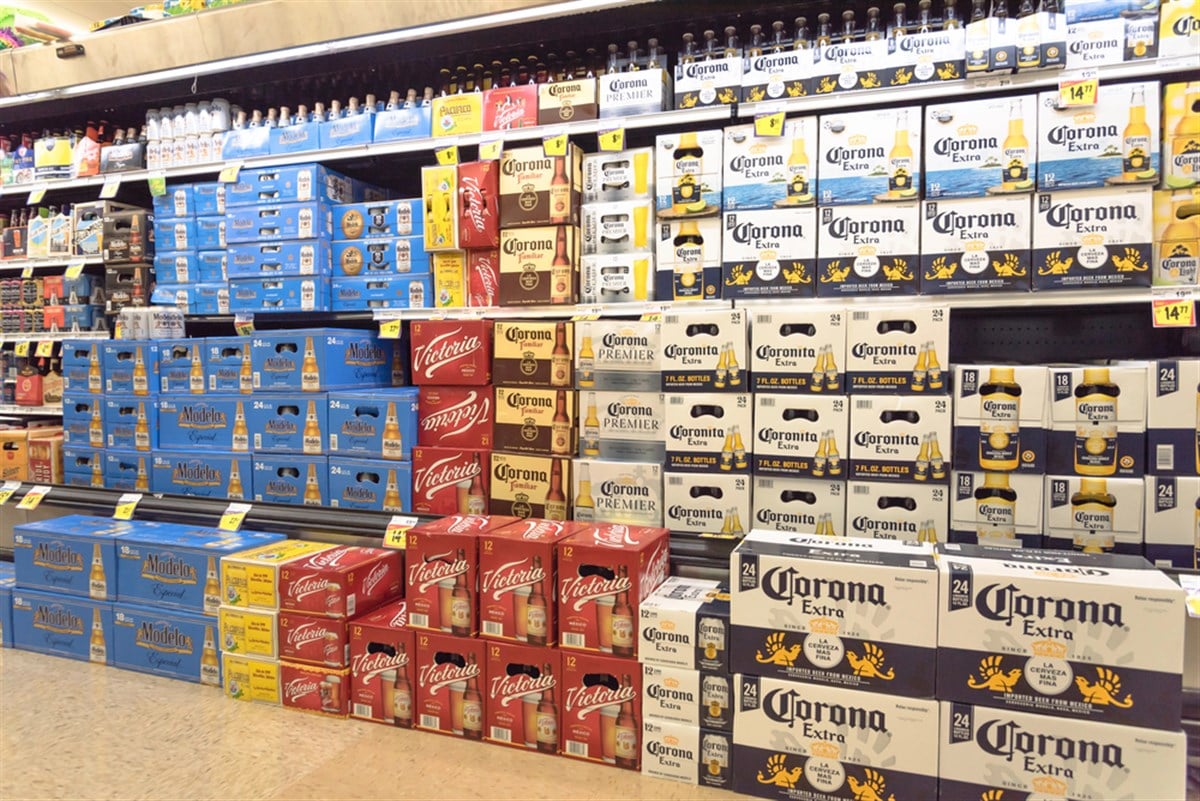
Constellation Brands (NYSE: STZ) is in the consumer staples sector and is the fourth-largest beverage company in the United States by market capitalization. The firm has underperformed the market and its sector over the past 12 months. It has provided a total return of 3%, while the consumer staples sector is up 6% over the same period. The firm released fiscal Q1 2025 earnings on the morning of June 3, 2024. It beat on earnings-per-share (EPS) and slightly missed on revenue. Shares traded down 3.3% on the day of the release. Let's get some context around Constellation’s business, explore its earnings, and compare it to its leading competitor.
Constellation Brands: Beer Business Leading the Way
Constellation is an international producer and marketer of alcoholic beverages, including beer, wine, and spirits. It operates well-known Mexican beers like Corona Extra, Modelo, and Pacifico. It is the second-largest beer company in the U.S., and Modelo is its number-one beer brand in America in terms of sales. Pacifico and Corona Familiar are tied for the fastest-growing imported beer brands.
The company operates two revenue-generating segments: Beer, Wine, and Spirits. Beer accounts for 82% of sales, wine 16%, and spirits 2%. The company is investing heavily in its beer segment, spending $900 million in fiscal year 2024. It used this money on brewery optimization, which increased production capacity by 14%, as well as constructing a new brewery in Veracruz, Mexico. It plans to spend an average of $750 million over each of the next four years on similar investments. It intends to increase production capacity by another 35% by the end of fiscal year 2028. The beer segment boasts higher gross margins of 52%, compared to 46% for wine and spirits.
The firm's main production costs come from packaging materials. Glass bottles make up most of these costs. Glass bottle usage makes up 58% of products sold, and aluminum 39%. Yeast and wheat are other key inputs. The firm's competitors include Anheuser-Busch InBev (NYSE: BUD), Heineken (OTCMKTS: HEINY), and Boston Beer (NYSE: SAM).
Earnings Show Strength in Constellation's Beer Segment, Weakness in Wine and Spirits
The firm reported adjusted EPS of $3.57, 12 cents above consensus estimates of $3.45. Revenue was essentially in line with estimates, at $2.66 billion, growing 6% from the previous year. Revenue from beer grew by 8%, while income from beer grew by 16% because of an expansion in operating margin of 260 basis points to 40.6%.
One key metric the firm highlights is the depletion rate, which was 6.4% in the beer division. This measures the growth in product sales from distributors to retailers. This helps measure how much product reaches the end customer, rather than just being shipped to a distributor and sitting in a warehouse. It is a more accurate measurement of demand growth. Demand for Modelo Especial and Pacifico drove growth, increasing by 11% and 21%, respectively.
Wine and spirits sales dropped 7%, and the depletion rate was -12.7%. The operating margin in this division decreased by 370 basis points to 15.3%. These factors resulted in segment operating income declining by 25%.
The company reaffirmed its full fiscal year guidance. It expects adjusted EPS to range between $13.50 and $13.80, which aligns with expectations.
Constellation Brands vs. Anheuser-Busch InBev: Who's on Top?
Constellation has some notable strengths compared to its rival, Anheuser-Busch InBev (InBev). One can see strengths and weaknesses in credit strength depending on the metric used. Constellation reported a much higher debt-to-equity ratio of 112% compared to 85% for InBev, a comparative weakness for Constellation. The EBIT (earnings before interest and taxes) to interest expense ratio measures how many dollars of earnings a firm has for each dollar of interest expense on its debt. Constellation is more capable of making its interest payments with this metric coming in at 8.0x versus 3.8x for InBev.
Other notable advantages include Constellation's net income margin of 24%, which is three times higher than InBev’s 8%. Constellation’s net income margin sits in the 91st percentile of the consumer staples sector. Constellation also shows an advantage in capital expenditure (CAPEX) growth at 23%. InBev's declined 10%. But, InBev's overall CAPEX is still over 2.6x higher than Constellation's. This makes sense, given that InBev is still a much larger firm, with a market capitalization that is 3.4x higher than Constellation. Constellation has a forward price-to-earnings ratio of 17.9x compared to 17.4x for InBev. In line with this multiple, analyst price targets for both firms imply a 20% upside from current levels.